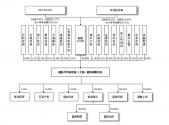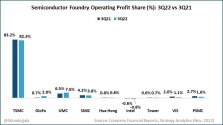Sanan Optoelectronics: Benefiting from the progress of domestic equipment, the proportion of the company's domestic equipment is gradually increasing
Jiwei.com news (text/Bai Yuxuan) On November 28, Sanan Optoelectronics asked on the investor interaction platform, "Is your company's silicon carbide and Mini LED production equipment produced nationwide? Is there any US or its allies?" If the supply is cut off, how to solve it?" Inquiry questions such as, in recent years, benefiting from the progress of domestic equipment, the proportion of companies using domestic equipment is gradually increasing.
Regarding the company's Mini LED technology, San'an Optoelectronics said that the company's high-end LED field continues to increase, especially the application of Mini LED has been continuously promoted by international leading customers.
Sanan Optoelectronics said that the company is continuing to develop its core business around the strategic plan. On the one hand, it adjusts the proportion of LED subdivided high-end products, and on the other hand, it strives to accelerate the improvement of the compound integrated circuit product business. With the release of production capacity and the continuous advancement of customer procurement scale, the company's profitability will be reflected. Stock price fluctuations are affected by various factors such as the macro environment, policies and market sentiment.
It is understood that Sanan Optoelectronics is the largest and leading quality full-color ultra-high-brightness LED epitaxy and chip industrialization manufacturer in China. On the basis of traditional advantages, it actively improves the subdivision of Mini/Micro LED and automotive LED. , plant lighting LEDs, ultraviolet/infrared LEDs and other products account for the structure; engaged in RF front-end, power electronics, optical technology compound semiconductor integrated circuit business, the revenue scale is growing with the increase in production capacity.



